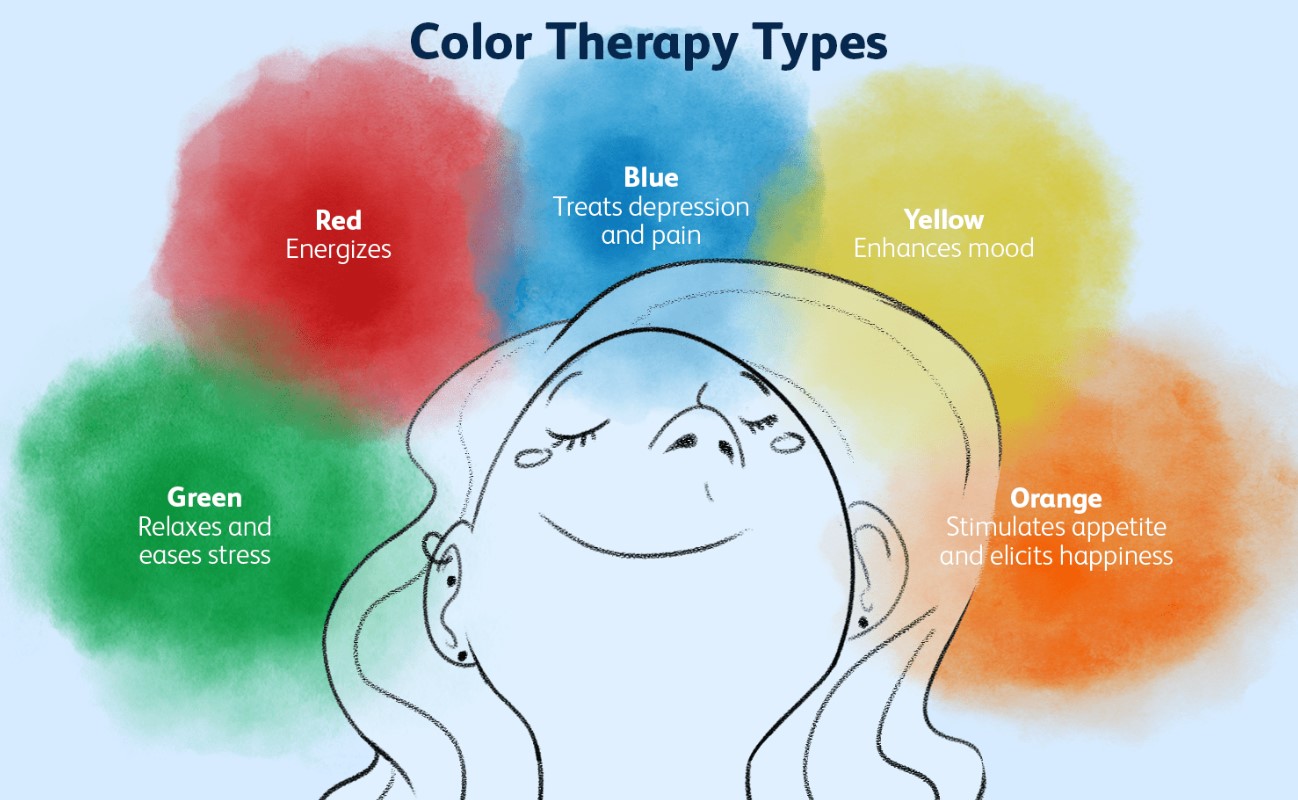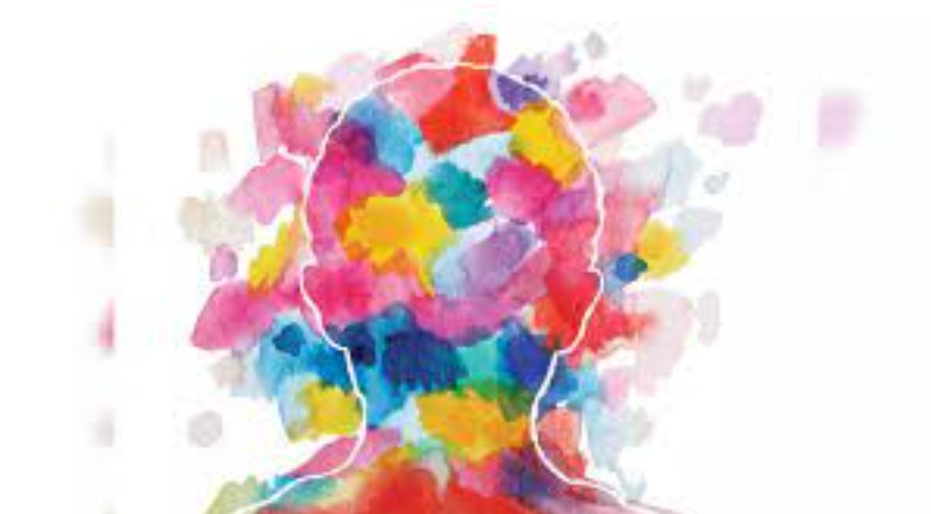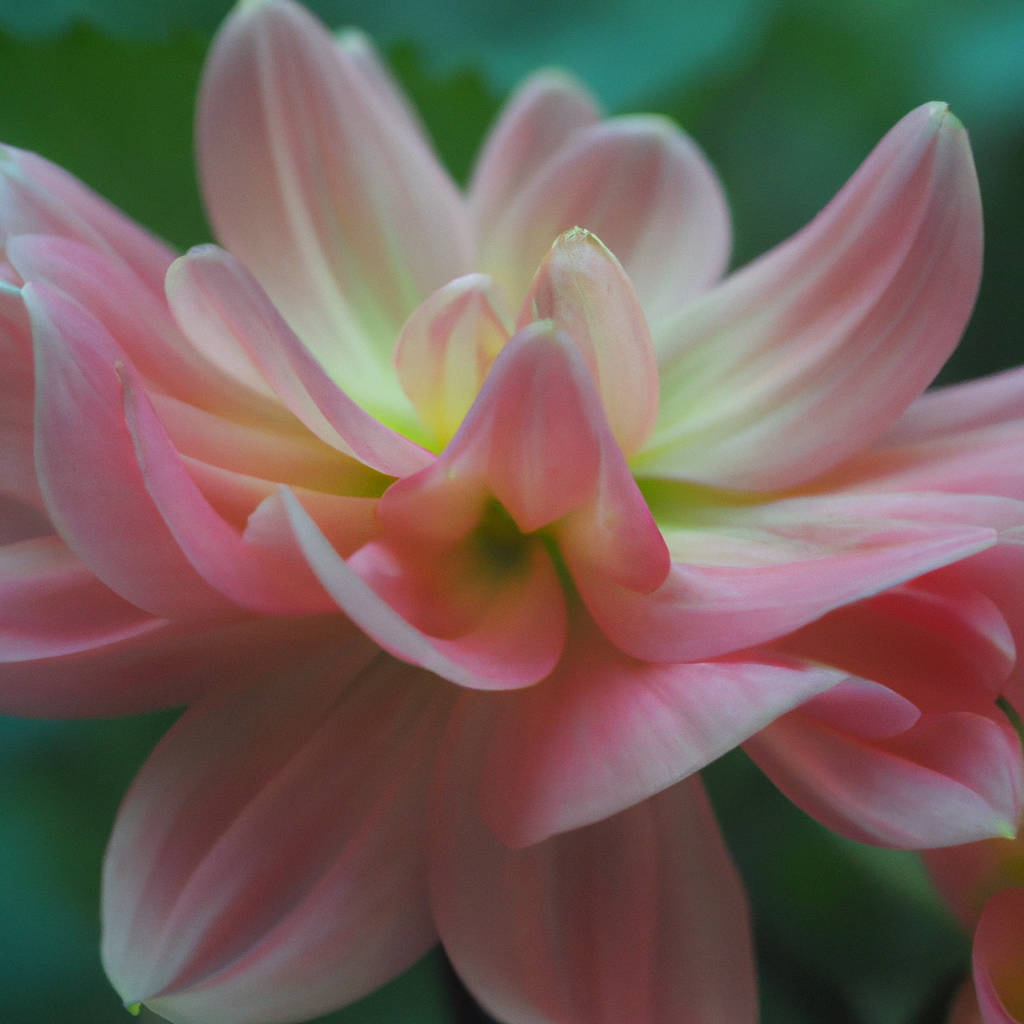The psychology of color is a fascinating field that delves into how different hues can influence our emotions, behaviors, and decision-making processes. There are at least ten primary colors that have distinct psychological meanings.
Firstly, red is associated with power, passion, and excitement. It stimulates energy and can increase heart rate, making it a popular choice for marketing to draw attention. On the other hand, orange combines the energy of red and the happiness of yellow. It’s associated with joy, sunshine, and tropics, representing enthusiasm, creativity, and success.
Yellow, the color of sunshine, exudes warmth and happiness and stimulates mental activity and muscle energy. It’s often associated with food and is highly effective for attracting attention, making it an ideal choice for window displays in shops. Green, symbolizing nature, provides a sense of tranquility and health. It promotes relaxation and has healing power, often used in hospitals to relax patients.
Blue, a serene and calming color, symbolizes trust, loyalty, and wisdom. It reduces stress and creates a sense of calmness, relaxation, and order. Purple combines the stability of blue and the energy of red, often associated with power, luxury, and ambition. It conveys wealth and extravagance, and it’s also associated with wisdom, dignity, and creativity.
Pink, a softer hue of red, represents compassion, nurturing, and love. It relates to unconditional love and understanding and is often used to signify romance. White, the color of perfection, symbolizes purity, innocence, and integrity. It’s often used in branding to communicate simplicity, safety, and cleanliness.
On the other hand, black denotes power, elegance, and mystery. It’s often associated with fear and the unknown but can also signify strength, authority, and sophistication, making it a popular choice for luxury brands. Lastly, brown, the color of earth, represents stability and reliability. It’s often used in the construction, legal, and real estate industries because it communicates simplicity and durability.
In conclusion, the psychology of color plays a significant role in our everyday lives. Each color has a unique psychological meaning that can influence our behaviors and emotions. Whether it’s the food we eat, the clothes we wear, or the color of a room, the colors around us have a profound impact on our lives.

Color Through History
The significance of color throughout history is a fascinating subject that transcends geographical boundaries and cultures. It is intriguing to observe how different civilizations and cultures have associated various meanings and importance to specific colors. The ancient Egyptians, for instance, cherished the color black because it represented the fertile and life-giving silt deposited by the Nile River. On the other hand, in ancient China, colors were believed to be manifestations of the five elements – wood, fire, earth, metal, and water, with each color carrying a unique symbolism. Green, symbolizing wood, signified growth and vitality, while red, symbolizing fire, was associated with joy and energy.
In Medieval Europe, colors were deeply tied to societal status and wealth. Purple, for instance, was a color reserved for royalty due to the high cost and rarity of the dye. The Renaissance era saw an explosion of color in art as new pigments were discovered and techniques for mixing and applying them were developed. The Impressionist painters of the 19th century further revolutionized the use of color, using vibrant hues to capture the fleeting effects of light and color in the natural world.
In modern times, color has infiltrated every aspect of our lives – from the clothes we wear to the cars we drive, and the products we buy. The psychology of color has been extensively studied and is used strategically in marketing and branding. For instance, red is often used to create a sense of urgency, while blue is used to evoke trust and dependability.
In conclusion, throughout history, color has held a significant place for various reasons – from defining societal hierarchies to evoking specific emotions. It is not just a visual aid to distinguish objects, but a powerful tool that can influence perceptions and behaviors. The study of color through history offers a rich understanding of human civilization and culture.
Exploring Color Meanings
Color psychology is an intriguing field that examines how different hues can impact human behavior, emotions, and perceptions. Various shades and tones elicit a spectrum of responses, which can be employed strategically in marketing, design, and even therapeutic practices. For instance, red is often associated with passion, intensity, and urgency, making it a popular choice for clearance sales and fast food restaurants. Blue, on the other hand, is known for its calming, reliable qualities, often utilized in corporate branding and healthcare settings.
Yellow, the color synonymous with sunshine, radiates warmth, happiness, and positivity, making it an excellent choice for children’s products or to evoke a sense of optimism. On the contrary, black signifies sophistication, power, and luxury, transforming it into a go-to color for luxury brands and formal events. On the flip side, white symbolizes purity, simplicity, and cleanliness, making it a standard for healthcare providers and minimalist design.
Orange blends the intensity of red with the cheerfulness of yellow, resulting in a color that incites enthusiasm and creativity. It is frequently used in the entertainment industry or to stimulate appetites in the food sector. Green, the color of nature, signifies growth, freshness, and tranquility. It is often seen in environmentally-focused and outdoor-related brands.
Purple, a combination of the stability of blue and the energy of red, is associated with luxury, power, and ambition. It’s often used to denote high-quality or premium products.
In the realm of color psychology, it’s crucial to remember that cultural context plays a significant role in color interpretation. What might be perceived as a positive color in one culture could have a negative connotation in another. Therefore, understanding color meanings is essential for effective communication, design, and branding strategies across diverse cultural landscapes. The exploration of color meanings is not only fascinating but also incredibly practical, given its wide-ranging applications.

Designers’ Guide to Color
The “Designers’ Guide to Color” is a fundamental resource that provides insights into the world of color theory, the psychological impact of different hues, and the practical application of color in design. This guide is a must-read for anyone involved in the creative industry, from graphic artists to interior designers, as it offers a deep understanding of how color can enhance or undermine a design’s effectiveness.
The guide explores the basics of color theory – primary, secondary, and tertiary colors, the color wheel, warm and cool colors, and color harmonies. These are essential concepts for creating a balanced and visually appealing design. Beyond this, the guide delves into the psychological effects of colors. For instance, red is known to evoke feelings of passion and urgency, while blue is associated with calmness and trust.
Understanding these psychological nuances can help designers use color to convey a specific emotion or message in their work. The guide also discusses the importance of cultural context in color perception, as colors can have different meanings in various cultures. For example, white may symbolize purity in some cultures, while it represents mourning in others.
The practical application of color in design is another crucial topic covered in the guide. It offers tips on how to use color effectively in different mediums, such as print, digital, or physical spaces. The guide emphasizes the importance of considering the environment in which the design will be viewed, as lighting and surrounding colors can significantly impact how a color appears.
The “Designers’ Guide to Color” is a comprehensive tool that equips designers with the knowledge needed to make informed color choices in their work. It encourages designers to think critically about color and its implications, resulting in more thoughtful, impactful designs.
The Impact of Red
Red, a color associated with a wide range of emotions and symbolism, holds an extensive impact on human behavior and society. Its captivating hue stimulates the senses, evoking strong reactions varying from love to danger. In the realm of psychology, red is known to intensify the pulse and raise the blood pressure, thereby influencing our actions and decisions. This color has a profound effect on our emotions, often triggering feelings of passion, intensity, excitement, or even aggression.
In the business world, red is used strategically in branding and advertising to capture attention and evoke desire. The color red, being associated with urgency and importance, is often exploited by marketers to prompt immediate action, such as sales and clearance events. It also plays a significant role in cultural contexts; in many Asian cultures, for example, red symbolizes prosperity and good fortune, often used in celebrations and ceremonies.
However, the impact of red extends beyond its visual appeal. Studies have shown that it can improve performance in individuals, making it a color frequently used in competitive settings. Athletes wearing red have been observed to perform better, possibly due to the color’s association with dominance and power.
Despite its positive impacts, the color red can also trigger negative responses. It is often associated with warning and danger, making it a universal sign for stop signals and emergency alerts.
In conclusion, the impact of red is broad and multifaceted, influencing human behavior, societal norms, and even our physiological responses. Its power lies in its ability to evoke strong emotions, command attention, and influence actions.

The Vibrancy of Orange
Orange, the flamboyant hue that lies between the fiery passion of red and the warm optimism of yellow, is a color that exudes vibrancy and energy. Its spectrum is as diverse as the feelings it evokes – ranging from the gentle apricot’s serenity to the bold allure of tangerine. The exuberance of orange is undeniably captivating, instantly injecting life into everything it touches.
This vivacious color is a visual representation of enthusiasm, creativity, and change. It’s the color of the setting sun, a brilliant spectacle painting the sky with shades of resplendent amber and gold. The radiance of orange is reminiscent of the autumnal leaves, their stunning transformation embodying a paradoxical blend of both vitality and decay. It’s the color of citruses, their tangy sweetness stimulating the senses, and their rich pigments serving as a feast for the eyes.
In the realm of symbolism, orange stands for courage, joy, and social communication. Its vibrant presence often marks significant cultural festivals and spiritual practices, adding an extra dimension of zest and conviviality. It’s the color that signifies transition, just as dawn and dusk are interludes between day and night, orange is the bridge between extremes, softening the intensity, and mellowing the harshness.
Indeed, the vibrancy of orange is its unmistakable signature, its vivacious character a testament to its irresistible appeal. Whether in nature, art, or everyday life, the presence of orange is an invitation to embrace life with a spirited enthusiasm, to celebrate change, and to indulge in the sensory delights it offers. Thus, orange is not merely a color; it’s an experience – vibrant, dynamic, and forever fascinating.
Yellow’s Sunshine Effect
Yellow, often associated with the radiant and warming quality of the sun, is a color that holds a significant influence on human emotions and perceptions. This hue, with its innate brightness and vibrancy, carries an inherent power to uplift spirits and foster a sense of happiness. This phenomenon, known as the ‘Sunshine Effect’, can be observed in a variety of contexts. When one walks into a room painted yellow, they immediately feel a warm, welcoming sensation, akin to being bathed in sunlight.
This color tends to stimulate the mind, sparking creativity and optimism. In fashion, yellow garments are often chosen to project a cheerful, lively image. Similarly, in the realm of interior design, yellow is often employed to create an atmosphere of warmth and coziness. In fact, research has shown that exposure to yellow can even have physiological effects, such as increasing metabolism and energy levels. Despite its intensity, yellow’s effect is rarely overpowering; instead, it provides a gentle, nurturing warmth that can brighten even the gloomiest of days. The ‘Sunshine Effect’ of yellow is a testament to the profound impact that colors can have on our mood and overall wellbeing. Thus, incorporating elements of this sunny hue into our lives can have a positive effect on our mental and physical health.

The Calm of Green
Green, the color of life, renewal, nature, and energy, is associated with meanings of growth, harmony, freshness, safety, fertility, and environment. The calmness of green soothes and relaxes our minds, alleviating anxiety and allowing us to recuperate from the stress of modern life. It evokes a sense of tranquility, offering a sanctuary away from the frenzied pace of existence. The serenity it imparts is akin to a quiet walk in the forest, with the leaves rustling gently in the wind and the distant chirping of birds filling the air.
This color has the power to bring us back to our roots, reminding us of our connection to the earth and the vitality of the natural world. When everything around us seems chaotic, the calm of green brings balance and peace, grounding us in the certainty of renewal and growth. It is the color that symbolizes the regenerative power of nature, the continuous cycle of seasons, the promise of a new beginning. When we surround ourselves with green, whether through plants in our homes or spending time in a park, we invite this tranquility into our lives. It is a subtle reminder to slow down, to breathe, and to appreciate the beauty of the world we inhabit. The calm of green is more than just a visual experience – it is a state of mind, a way of being that encourages harmony and peace within ourselves and our surroundings.
Blue’s Serene Essence
The color blue stands as a universal symbol of tranquility, calmness, and peace. It embodies the essence of serenity in its purest form, capturing the soothing whispers of a gentle breeze or the rhythic lullaby of the ocean waves. The color blue is the visual equivalent of a deep, cleansing breath, releasing stress and inviting a sense of quietude into the soul.
Imagine standing on a cliff’s edge, overlooking the vast expanse of a sapphire sea, its surface glittering under the soft glow of the noonday sun. With every rise and fall of the waves, your heart beats in sync, absorbing the pacifying rhythm of nature. Each shade of blue, from the light azure of the horizon to the dark navy depths, serves as a reminder of the world’s vastness and our own place within it.
Similarly, consider the profound tranquility of a clear, star-studded night. The sky, bathed in a blanket of midnight blue, is a reservoir of silence and solitude. The twinkling stars, scattered across the celestial canvas, seem to whisper tales of the cosmos, inspiring awe and tranquility in equal measure.
Blue’s serene essence is also reflected in art and culture. Painters use different hues of blue to convey depth and emotion, while music often utilizes blue notes to evoke feelings of longing and peace. The color blue is a universal language of calm, an invitation to pause, reflect, and find tranquility within the chaos of life. Its serene essence is a gentle reminder of the peace that lies within us, waiting to be discovered.

Indigo and Violet: Depth and Spirit
Indigo and violet, these two colors, often associated with the deeper end of the spectrum, carry profound connotations of depth and spirit. In many cultures, indigo—a rich, deep blue—is linked to intuition, integrity, and structure. It is a color that resonates with the concept of vastness, mirroring the endless expanse of the night sky or the profound depths of the ocean. In various spiritual practices, indigo is also associated with the third eye chakra, symbolizing wisdom and spiritual awareness.
On the other hand, violet—a blend of passionate red and tranquil blue—exudes a sense of balance. It embodies spiritual enlightenment, transformation, and calmness. In art and literature, violet often represents imagination and dreams. It’s no wonder that this color is often associated with the crown chakra, which denotes spiritual connection and consciousness.
Together, indigo and violet create a spectrum of depth and spirit. They represent the journey of self-discovery and introspection, encouraging us to delve deeper into our subconscious and connect with our higher selves. The blend of these two colors also symbolizes the balance between earthly existence and spiritual transcendence, reminding us of our physical presence while also urging us to explore the intangible realms of spirituality and consciousness.
In essence, indigo and violet are not just colors; they are powerful symbols that embody deep, spiritual meanings. They remind us of our potential to reach profound depths within ourselves and to ascend towards higher spiritual realms. These two colors, in their depth and spirit, serve as a constant reminder of our infinite potential and the boundless possibilities that lie within our reach.
Pink’s Playful Charm
Pink, an emblem of sweetness and innocence, carries a playful charm that appeals to both the young and the old. This delightful hue, often associated with femininity, carries an enchanting allure that is hard to resist. It is a color that speaks of joy, fun, and a youthful spirit, making it a beloved choice in fashion, interior design, and art. Whether it is the soft blush of a cherry blossom or the vibrant shade of bubblegum, pink has a unique ability to captivate, soothe, and excite.
The whimsical charm of pink is not limited to its visual appeal. It also evokes a sense of playfulness and creativity, inspiring artists, designers, and even everyday individuals to explore their imaginative side. Its versatility allows it to be paired with a variety of other colors, creating a striking balance between boldness and subtlety. This resilience and adaptability add to pink’s playful charm, making it a fascinating subject of study and appreciation.
In popular culture, pink has been used to symbolize positivity, optimism, and playfulness, reinforcing its reputation as a color of charm and delight. From the iconic pink of Barbie to the catchy tunes of the pop singer P!nk, this color’s playful charm continues to captivate audiences worldwide. Its enchanting allure is truly a testament to pink’s enduring appeal. So, whether used in a painting, a piece of clothing, or an entire room, pink’s playful charm is sure to bring a touch of joy and whimsy to any space.

Contrast of Black and White
The contrast of black and white is a visual representation that has been entrenched in our psyche from a young age, symbolizing the diversity and duality of existence itself. It is a palette of extremes, evoking a variety of emotions and interpretations. On one side, the color black, often associated with power, elegance, and mystery, can engulf everything in its path, creating an atmosphere of depth and intrigue. It is the embodiment of the night sky, vast and infinite, a canvas for the stars to shine upon. On the other hand, the color white stands as the epitome of purity, innocence, and simplicity.
It is the blank sheet, the untouched snow, and the morning light that fills the world with brightness and clarity. Like day and night, these two colors stand in stark contrast to each other, each highlighting the other’s unique qualities. This dichotomy is not just visible in the physical world but is also reflected in human emotions and perceptions. It is the visual representation of the dual nature of reality – the presence and absence, the visible and invisible, the obscure and the clear. The black and white contrast also speaks volumes about diversity and unity, individuality and conformity, complexity and simplicity. It is a timeless and universal theme that continues to fascinate artists, philosophers, and thinkers, inspiring them to explore this unending dance of opposites and the harmony that lies within.
Utilizing Color’s Influence
Color’s influence can be harnessed powerfully in various fields, from marketing and branding to interior design and fashion. This is because colors evoke certain emotions and responses in people, thereby influencing their perceptions and decisions. For instance, the color red is often associated with power and urgency, so it’s frequently used in advertising to catch the audience’s attention or to encourage impulse purchases.
On the other hand, blue is often perceived as calming and trustworthy, making it a popular choice for corporate logos and websites. Utilizing color’s influence requires understanding these associations and strategically employing them to elicit the desired response. In interior design, for example, one might use shades of green to promote a sense of tranquility and connection with nature, or bold, vibrant hues to create an energizing and stimulating space. In fashion, the choice of colors can dramatically affect how a garment is perceived and can be used to convey a particular style or mood. Moreover, in the realm of art, artists have long exploited the emotional impact of color to enhance their work’s expressive power.
Therefore, whether one is designing a website, decorating a room, or creating a piece of art, an understanding of color’s influence can be a valuable tool. However, it’s crucial to remember that color perception can vary greatly among individuals and cultures, so it’s vital to consider the target audience when making color choices. Overall, the thoughtful use of color can have a profound impact, influencing perceptions, emotions, and even behavior.
